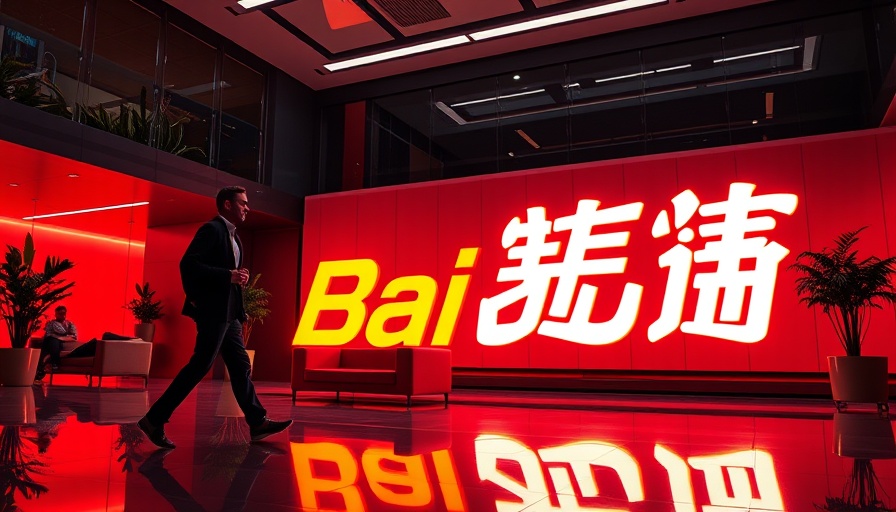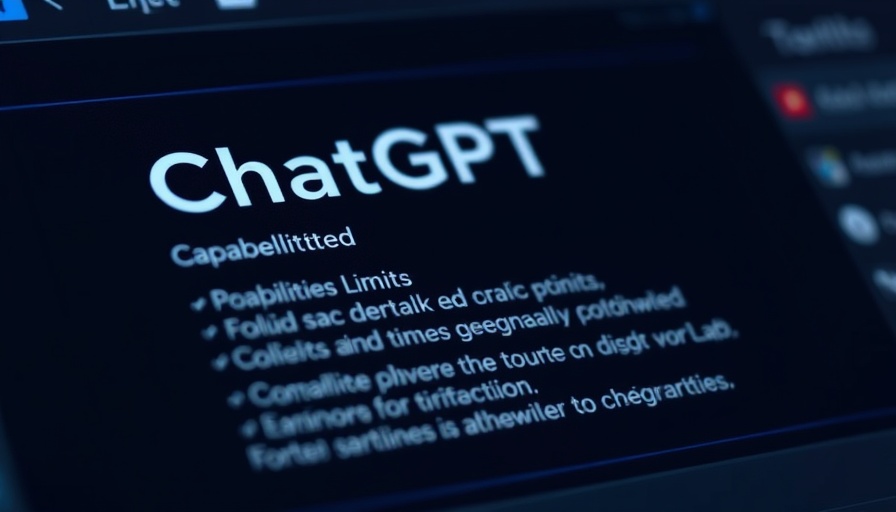
China's Ernie X1: A Game Changer in AI Technology
In a bold move that further complicates international competition in artificial intelligence (AI), Baidu has launched the Ernie X1 reasoning model alongside Ernie 4.5. These new models signal China's determination to take a significant lead in AI capabilities, showcasing impressive performance metrics that challenge existing benchmarks set by American firms like OpenAI and emerging players like DeepSeek.
What Makes Ernie X1 Stand Out?
Baidu claims that the Ernie X1 delivers reasoning capabilities on par with DeepSeek's R1 model but at an astonishingly lower cost—approximately half the price. By leveraging the massive datasets available within its ecosystem and integrating open-source principles, Baidu is positioning the Ernie series as not only a cost-effective alternative but also a powerful competitor in the AI landscape.
The Cost Factor: An AI Price War
The economics of AI is as vital as the technology itself. Baidu's Ernie 4.5 and X1 models greatly outpace OpenAI's offerings in terms of affordability, with operational costs reported as being just a fraction of their American counterparts. For selected use cases, Ernie X1 operates for under 2% of the cost of OpenAI’s model. Such attractive pricing could potentially shift how businesses and developers choose their AI solutions, particularly in cost-sensitive industries.
Open Source Approach: Fostering Broader Adoption
Baidu's decision to make the Ernie Bot chatbot available for free ahead of schedule highlights a broader trend towards open-source AI. CEO Robin Li emphasized that open-sourcing AI technology encourages widespread experimentation and adoption, suggesting that the future of AI might hinge on the collaborative sharing of knowledge and resources rather than on proprietary models alone.
Broader Implications for the AI Industry
The rise of affordable AI models from Baidu and DeepSeek raises significant implications for the future of technology. As firms scramble to adopt AI for various applications—from chatbots to autonomous systems—competition is expected to intensify, not just between these companies but across the globe. This could inspire a more diverse range of applications and accelerate the pace of AI innovation, particularly in the realm of multimodal systems capable of integrating text, video, images, and more.
The Road Ahead: Challenges and Opportunities
China's ambition to lead in AI by 2030 is matched by the resilience of the global AI market, which is witnessing rapid developments in multi-use AI applications. While Baidu's recent models showcase incredible potential, the challenge will lie in user adoption and overcoming skepticism about performance compared to established names like OpenAI. For developers and companies keen to stay ahead of the curve, the introduction of models like Ernie serves as both a clarion call and an opportunity.
Conclusion: Embrace the AI Future
As the battle for dominance within the AI industry heats up, understanding the capabilities and implications of models like Baidu's Ernie X1 becomes critical. The integration of affordability, open-source accessibility, and robust performance in these models opens doors for innovation across sectors. Engaging with these AI advancements not only informs decision-making processes but may also guide strategic business directions moving forward.
Is your organization ready to embrace these transformative technologies? Explore how incorporating AI tools like Ernie into your operations can set you apart in today's competitive landscape.
 Add Row
Add Row  Add
Add 




 Add Row
Add Row  Add
Add 

Write A Comment